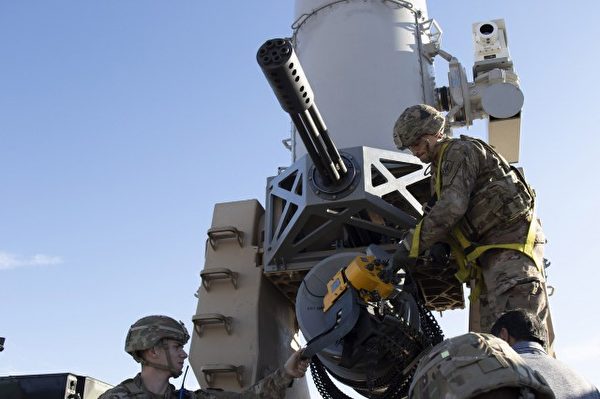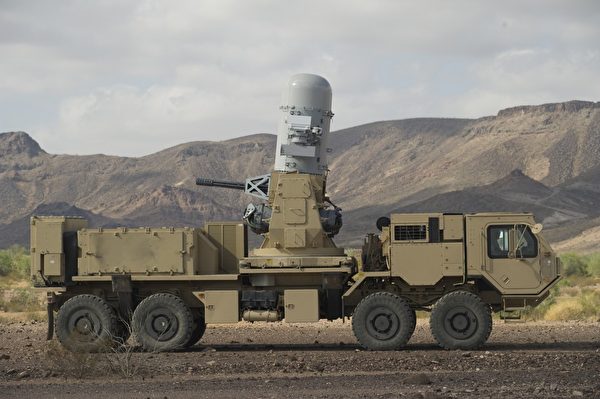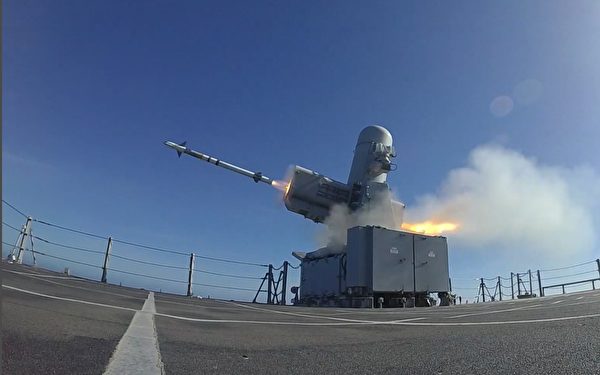[Epoch Times August 31, 2021]August 30 is the last day of the US military in Afghanistan. In the morning, a rocket attempted to attack the Kabul Airport. It was said that five rockets were intercepted by the US defense system. There is no news of casualties and the US military has not disclosed relevant details. What did the US military use to intercept the rockets of terrorist organizations?
In the Israeli-Palestinian conflict in May, Israel’s iron dome system played a huge role, intercepting thousands of rockets launched by Hamas. Although the US military has purchased several iron dome systems, they have not been deployed in Afghanistan. In fact, in addition to Israel’s Iron Dome system, many countries have developed their own low-altitude, short-range interception systems that can intercept rockets, artillery shells, unmanned aerial vehicles, and missiles, as does the United States.
This time, the rocket interceptor should be the Phalanx Weapon System (Phalanx Weapon System) developed and produced by Raytheon. It is also called the close-in weapon system. It is not a brand new weapon. This type of weapon system has been widely used on warships of the U.S. Navy and is the last line of defense against missile and aircraft attacks at close range. Since the phalanx weapon system can intercept faster missiles and aircraft, it can of course also intercept relatively low-speed rockets, artillery shells, and drones.
According to Raytheon’s introduction, the phalanx weapon system is a rapid-fire, computer-controlled, and radar-guided gun that can detect and destroy targets in the air, including aircraft, artillery shells, and rockets.
The main weapon of the phalanx weapon system is a 20mm Vulcan cannon, which is mounted on a rotating base and guided by radar. It can usually fire 3,000 rounds per minute and the maximum rate of fire can reach 4,500 rounds per minute. The airtight fire net is destroyed in the air, and the effective range is about 5.5 miles (about 8.85 kilometers).

The 20-mm caliber bullet includes a 15-mm armor-piercing projectile in a plastic shell and a lightweight metal thruster. Each bullet costs about $30. If it is fired continuously for one minute, it will cost $90,000. However, radar search, tracking, guidance, and interception of a target should be completed within ten or a few seconds. A typical interception requires about 300 rounds of bullets, which is equivalent to about $9,000, so the cost is acceptable. Compared to protecting human lives, or high-value weapons, equipment or assets, this cost is worth it.
Israel’s iron dome system has a larger control range, and multiple transmitters of a system can be deployed separately, which is relatively more expensive. The control range of the square array system is relatively small, but each system operates independently, which is more mobile and flexible, easy to deploy and operate, and relatively lower cost.

In 2012, the land-based phalanx weapon system began to be deployed at Bagram Airport in Afghanistan, and was previously used by the US Army to protect Iraqi bases. The land-based phalanx weapon system has a clearer goal and is directly listed as an anti-rocket, artillery, and mortar interception system (Counter-Rocket, Artillery, Mortar Intercept System, C-RAM for short).
In 2019, Raytheon won a large-scale contract worth US$205.2 million from the US Army for the purchase of phalanx weapon systems. Similar sea-based and land-based systems are also sold to US allies. For the video of the U.S. Navy’s test firing of the phalanx weapon system, please click Video One and Video Two.
The CCP’s new ships are also generally equipped with similar weapon systems. The earliest they should have been acquired from the modern destroyers imported from Russia in 2000. After that, the CCP has imitated and improved them. It should have copied similar weapons systems from the United States and Europe. Have not experienced actual combat.
Raytheon also developed the SeaRAM weapon system based on the phalanx weapon system and the Rolling Airframe Missile (RAM Ram).,The 11-unit rolling missile replaces the 20-mm cannon and can intercept high-speed anti-ship missiles at a speed of at least Mach 2 per hour. It should be mainly aimed at the CCP and Russia. It is not ruled out that a land-based version may also appear in the future.

The CCP also imitated the American SAM Ram Roller Missile and developed the Hongqi-10 missile system, which was installed on newly built warships. The U.S. destroyer began installing the more advanced SeaRAM missile system in November 2015, and the CCP has not seen a copy of it so far. For the video of the US Navy’s Sea Ram missile test launch, please click here.
However, both the Ram and the Sea Ram are the short-range missile defense system of the US Navy fleet. The US Burke-class destroyers are also equipped with standard six and standard three missiles for medium and long-range missile interception, including intercepting ballistic missiles. The CCP has not yet been able to master relevant technologies. At present, there are only short-range Hongqi-10 missile systems and phalanx weapon systems. Missile defense is also one of the biggest shortcomings of CCP warships.
Similarly, the US military has already deployed a large number of Patriot missile interception systems and provided them to allies; the CCP is still trying to imitate Russia’s S-400 and S-300 missile systems.
——The Epoch Times debut
Editor in charge: Gao Yi#
.
